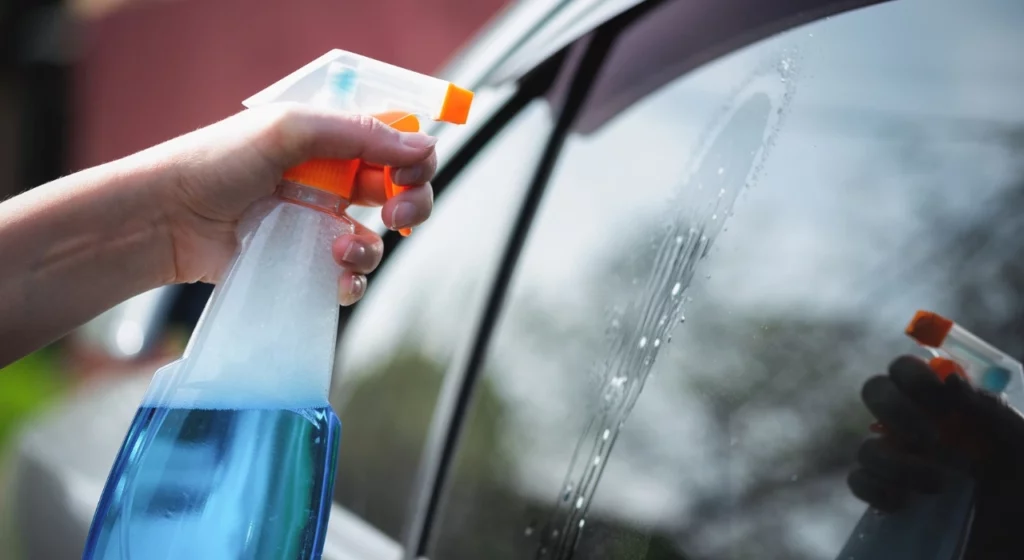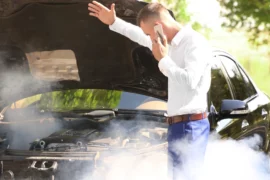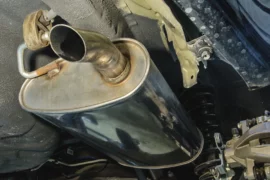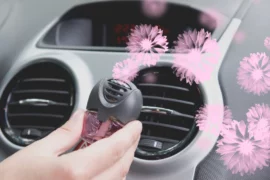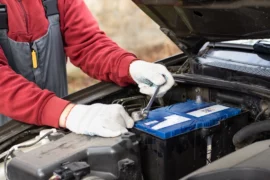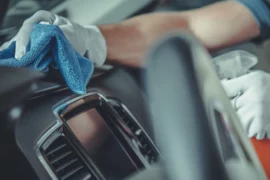You don’t need to use a lot of water, go to the car wash, or let chemicals stream into storm drains to keep your car clean and glossy. More and more automobile owners are learning about the benefits of waterless cleaning methods as people become more concerned about the environment and the need to save water.
A waterless car wash at home is a new way to conserve time, money, and our precious water resources while still getting professional-quality results. This complete tutorial will teach you everything you need to know about washing your car without water, from picking the correct supplies to learning how to use professional methods that will make your car appear like new.
Why Should You Wash Your Car Without Water?
Old-fashioned ways of washing cars use a lot of water and often leave behind runoff that pollutes nearby waterways. Waterless car washing is a revolutionary way to take care of your automobile that solves both environmental problems and the problems that current car owners confront. Waterless cleaning is a better option if you live in an apartment that doesn’t have access to outdoor water sources, your neighbourhood has water limitations, or you just want to be more environmentally friendly.
This method saves water and gives you more convenience and freedom than regular washing can. Knowing the benefits can help you decide whether or not to convert to this environmentally friendly way of cleaning.
Benefits of Saving Water
Washing a car the old-fashioned way uses between 80 and 140 gallons of water, making it one of the most water-intensive things you can do at home. Waterless car washing gets rid of this need completely, so you can clean your car several times with just one bottle of cleaning solution. This conservation is really crucial when there isn’t much water or when there are water restrictions.
The effects on the environment go beyond just saving water. Waterless methods also stop soapy runoff from getting into storm drains and eventually making its way to rivers, lakes, and oceans.
Cost-Effectiveness
It doesn’t take long to see the money-saving benefits of washing your automobile without water. A single bottle of good waterless cleaner may wash your car several times, and it costs much less than travelling to a professional car wash over and over again or paying for water bills every time you wash your car at home.
You also save money on standard car cleaning products like soap, wax, and other things. You only have to use microfiber cloths and waterless cleaning products a few times to get your money’s worth.
Suggestion: Learn What Causes A Car Heater To Blow Cold And What It Costs To Repair
The Ease of Use
For people with hectic lives, cleaning their cars without water is the most convenient option. You may wash your automobile anywhere and at any time, even if you don’t have access to water, hoses, or drainage places. This flexibility is especially useful for people who live in apartments, work in offices, and want to clean their cars during lunch breaks or travel a lot. It goes faster than regular washing and doesn’t need much setup or cleanup.
Things You Need to Wash Your Car Without Water
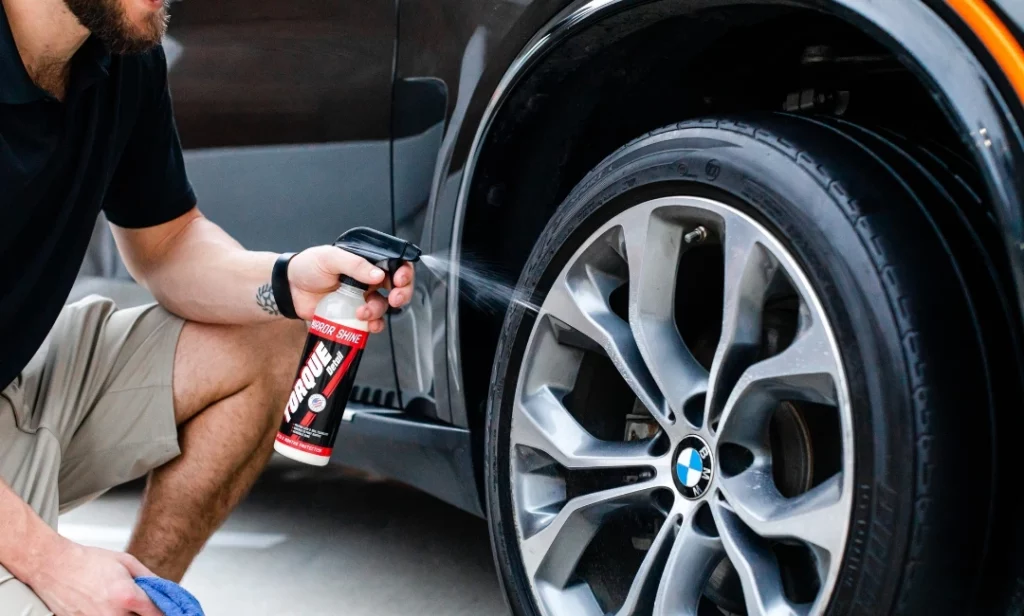
Having the correct tools and products on hand is the only thing that will make waterless auto cleaning work. The difference between a bad cleaning job and one that protects your car’s surface is the quality of the products you use. The good news is that waterless car cleaning is easier and cheaper than washing your automobile with water because it needs fewer materials.
Buying high-quality items at first will save you money in the long term and make sure your automobile gets the finest care possible. Knowing what each item does and why it matters can help you make smart choices about what to buy and get the same outcomes every time.
Cleaning Products That Don’t Use Water
Pick waterless car wash products that are made just for cars. These products include particular cleaning and lubricating chemicals that safely lift dirt without scratching. For extra shine and protection, look for items that have wax or ceramic technology.
Spray-on formulations that trap dirt particles are a popular choice since they make it safe to wipe them away. Don’t use all-purpose sprays or household cleaners on your car’s paint job because they don’t have the right ingredients to protect it.
Microfiber Cloths and Towels
Microfiber technology is necessary for cleaning without scratching, and it is the best method utilised by expert detailers all over the world. Buy at least four to six high-quality microfiber towels, and set apart certain towels for certain jobs, such as cleaning wheels, body panels, and final buffing.
The tiny strands hold dirt and debris safely, so they don’t itch like ordinary towels or cloths can. Pick towels with varied textures for different jobs. For example, use waffle-weave towels to dry things and plush towels to apply goods.
Related: Get That Fresh-Car Feel With Carpet Shampooer Cleaning Tips.
More Useful Tools
If you want to clean your things, think about getting a spray bottle, detailing brushes for hard-to-reach places like grilles and emblems, and separate containers to keep your materials in order. A detailing trolley or caddy can help you keep your car neat and move around it quickly. Having extra towels on hand makes sure you never run out of clean ones while you’re washing.
A Step-by-Step Guide to Cleaning Your Car Without Water
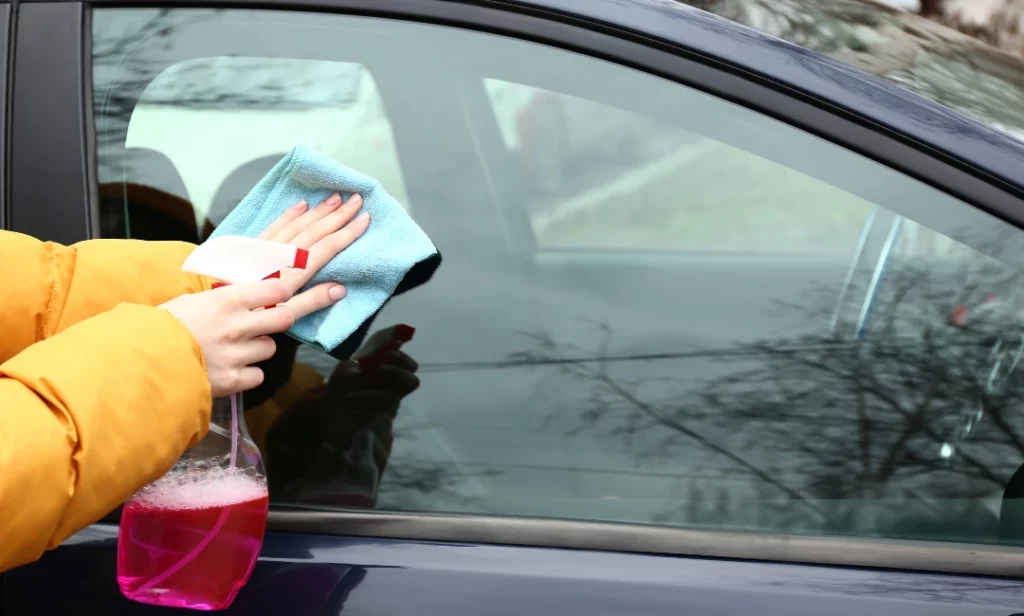
Following the right steps is very important if you want to get professional results and save your car’s finish from becoming damaged. You need to be patient and pay attention to the details, but the results are as good as those of pricey professional car washes. Cleaning systematically makes sure you don’t miss any spots and keeps the cleaning solution from drying before you can wipe it away.
Timing and skill are more important in waterless washing than in standard washing since you have less room for error. This all-encompassing method will help you through every step, from getting ready to the last polish that makes your automobile shine.
Getting Ready and Setting Up
Park your car in a shady spot away from direct sunshine. Heat makes cleaning solutions dry too fast and can leave streaks or blotches. If you’ve been driving recently, let hot surfaces cool down. Get all of your supplies together and put them in a place where you can easily get to them. Take off any loose things from the outside of your car, including floor mats or other things. Make sure your microfiber towels are clean and don’t have any dirt on them that could scratch the paint.
How to Clean
Begin at the top of your car and work your way down in small pieces, usually two feet by two feet. Spray a lot of the waterless cleaning solution onto the surface and let it sit for a few seconds to trap dirt and grime. Instead of moving the towel in circles, which can leave swirl marks, use a clean microfiber towel to wipe the area in straight lines. Change the towels when they get dirty and flip them over often to always use a clean part.
Finishing Touches
After you clean each part, use a different dry microfiber towel to polish it until it shines. This last buffing stage gets rid of any leftover residue and activates any wax or other protective components in the cleaning product. To get streak-free results, pay extra care to painted areas, chrome trim, and glass surfaces. Use special towels to clean your wheels and tires so that brake dust and road grime don’t go to other parts of your car.
DIY Natural Cleaning Solutions
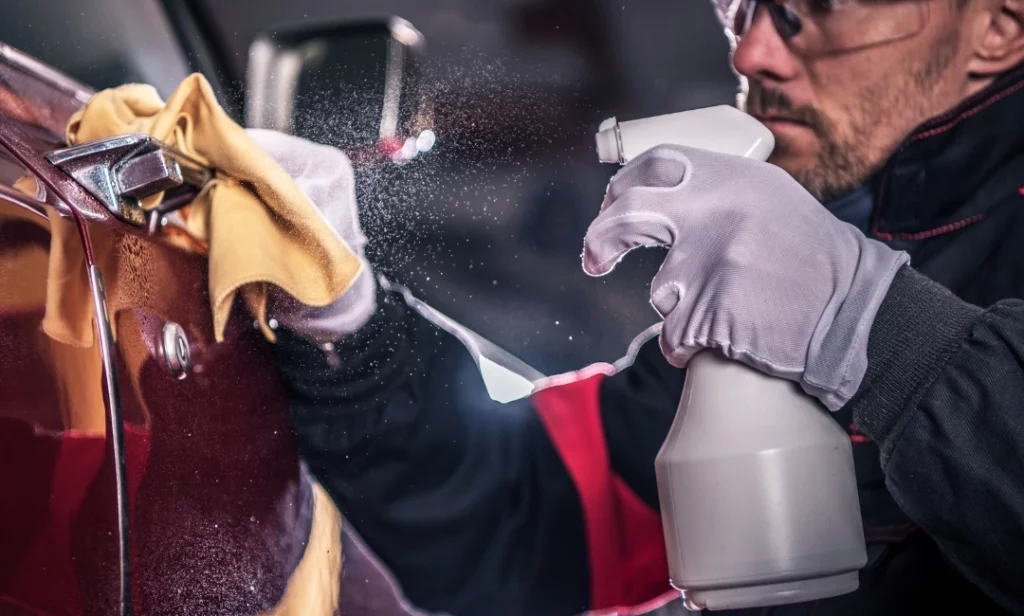
If you care about the environment and want to make your own cleaning products, you can use natural components from your kitchen to make surprisingly good ones. These DIY car wash solutions let you choose all the ingredients while still getting the benefits of washing your automobile without water. Natural solutions are great for light cleaning jobs and keeping things clean between bigger cleaning sessions.
Making your items also saves you a lot of money and cuts down on the packaging waste that comes with store-bought goods. It’s crucial to know the right ratios and uses, though, to make sure these natural compounds clean well without hurting the surfaces of your car.
Baking Soda Solutions
- Works as a mild abrasive to get rid of tough stains and road filth without hurting delicate paint.
- Has natural deodorising capabilities that get rid of smells from surfaces inside and outside.
- For regular cleaning, mix one tablespoon of baking soda with two cups of water. For difficult stains, make a paste.
- Use microfiber cloths to apply and rinse well with clean, moist towels.
- Works especially well on chrome bumpers, wheel wells, and rubber trim pieces.
Mixing Lemon Juice With Vinegar
White vinegar is great for getting rid of soap residue, mineral deposits, and water spots that can build up on glass and chrome surfaces. Lemon juice has natural antibacterial capabilities, plus it also smells good and helps break down organic debris like tree sap and bird droppings. To clean windows, mix equal amounts of white vinegar and water. To make a strong paste that gets rid of difficult stains, mix lemon juice and baking soda.
How to Mix and Use?
Put one cup of water, two tablespoons of white vinegar, and one tablespoon of lemon juice in a spray bottle to make a simple all-purpose cleanser. For places that are really dirty, add a few drops of natural dish soap to get them even cleaner.
Before using a homemade solution on your paint or finish, always try it on a small, hidden area first to make sure it won’t hurt it. For optimal results, keep DIY solutions in labelled containers and use them within a week.
Pro Tips for Best Results
Professional detailers have learned over the years how to do things that can greatly improve your results while avoiding frequent blunders that can ruin the finish of your car. These tips from the pros will help you get results that are better than those of amateurs. These suggestions can help you save time, avoid making expensive mistakes, and always get great results.
The trick is to know how timing, technique, and the environment all work together to make the best circumstances for washing your car without water at home. Using these professional tips will take your car upkeep to the next level.
You May Also Like: Clean Your Car Interior Like A Pro With These Easy DIY Tips.
Timing and Weather Considerations
When it’s cooler and more humid, such as in the early morning or late evening, cleaning chemicals won’t dry out as rapidly. Don’t clean when it’s windy, because that can blow dirt and dust onto surfaces that have just been cleaned. Check the weather forecast to be sure you won’t get caught in the rain right after you clean. This could ruin your hard work and waste cleaning supplies.
Common Mistakes to Avoid
Do not use the same towel on the wheels and body panels because brake dust and road filth might harm the paint. Don’t utilise waterless ways to clean cars that are really unclean or muddy, as this might create scratches and bad outcomes. Don’t skip the preparation step or rush through parts; good technique takes time and care. Instead of using dirty microfiber towels, change them out often while you clean.
Conclusion
Waterless car washing is the future of eco-friendly car care since it is easy, saves money, and helps the environment without sacrificing results. You can get showroom-quality results from the comfort of your driveway or parking area if you use the right procedures, the right supplies, and the right professional advice.
This eco-friendly way to take care of your automobile helps protect our water resources and keep your car looking great, whether you use commercial waterless products or make your own natural ones. Find out why millions of car owners have switched to this new way of cleaning their cars without water by starting your waterless car washing journey today.
FAQ’s
Can using waterless car wash products hurt the paint or clear finish on my car?
High-quality waterless vehicle wash products are made with special lubricating chemicals and encapsulating technology that safely removes dirt without scratching or damaging the surface. But using the improper method, unclean towels, or trying to clean cars that are really dirty can hurt them. To keep your paint safe, always use clean microfiber cloths, work in tiny areas, and pick high-quality products made for use on cars.
How often should I wash my automobile without water?
How often you wash your car without water depends on how you drive and what you want, but most car owners find that washing it once a week or every other week works well. If you drive your car on dirty roads or park it outside, you may need to clean it more often. If you keep your car in a garage and mostly drive it on clear roads, you can go longer between washes. Cleaning regularly makes each session easier and more useful.
Can you wash a car without water if it’s dirty or muddy?
Waterless car washing is great for cleaning up mild to moderate grime and doing routine maintenance. If your car is really dirty and has mud, dust, or big pieces of trash on it, you should rinse it out or take it to a regular car wash first. Using waterless ways to clean really unclean cars might cause scratches and other problems because the chemicals are meant for maintenance, not heavy-duty cleaning.
What makes waterless vehicle wash products different from normal cleaning sprays?
Waterless car wash products have unique lubricants, encapsulating agents, and sometimes protective waxes or ceramics that conventional household cleansers don’t have. These car-specific chemicals safely lift grime while also protecting and shining. Regular cleaning sprays and all-purpose cleansers don’t protect the finish of cars and could even harm it or leave streaks and residue.
Can I use waterless car wash solutions on every part of my car, even the glass and the inside?
Most waterless car wash products are made for painted surfaces on the outside of the automobile, but they also perform well on glass and chrome trim. Look at the labels on the products to see what they can and can’t do. Use products that are made for leather, plastic, or fabric on the inside of things. Some waterless products may leave a film on windows that makes it hard to see, so try them out in a place where they won’t be seen first.

